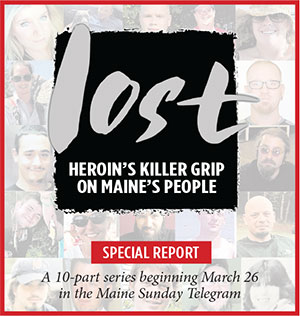Maine Attorney General Janet Mills released a revised report Tuesday on drug overdose deaths for 2016 and said the record-breaking numbers further highlight a need for more treatment as well as prevention and education efforts.
The total number of Mainers who died from drug overdoses in 2016 was 376 – down slightly from the preliminary data released in February. That represents a nearly 40 percent increase over 2015. More than eight in 10 involved opioids – heroin, fentanyl or prescription painkillers such as OxyContin.
The report includes new figures showing how service centers like Portland and Bangor have been hit hardest. Portland has about 5 percent of the state’s population, but 11 percent (42) of overdose deaths in 2016 happened there. Bangor, home to 2 percent of all Mainers, recorded 9 percent (32) of overdose deaths.
“The number of deaths caused by heroin and fentanyl is unprecedented, yet the danger of prescription opioids remains unabated,” Mills said in a statement. “It is time to fully fund treatment services for those affected by this deadly disorder and to fully engage in prevention and education efforts. Using these drugs, alone or in combination, is playing with fire.”
The Portland Press Herald/Maine Sunday Telegram last month published a 10-part series, “Lost,” that explored the heroin/opioid epidemic in Maine. Among the findings of that series were:
• Although many states have been ravaged in recent years, the death toll has been rising faster in Maine than almost every other state.
• Between 2013 and 2014, Maine had the third-highest increase in drug-related deaths of any state, 27.3 percent, behind only New Hampshire and North Dakota.
• Between 2014 and 2015, Maine was again among the top states for increases. Its 26.2 percent jump trailed only New Hampshire, North Dakota and Massachusetts.
• The numbers would almost certainly be higher if not for the increased availability of Narcan, a drug that reverses the effects of an opioid overdose. In 2016, Maine emergency professionals administered 2,380 doses of Narcan, up from 1,565 in 2015 and 1,128 in 2014.
Death rates from opioid overdoses, by county
Deaths per 100,000 residents in 2016. No data is available for counties with fewer than 10 deaths.
Interactive: Christian MilNeil
Tuesday’s revised report, prepared by Marcella Sorg, a forensic anthropologist at the University of Maine, showed what most people already know: No part of the state has been untouched.
In 2015, five of 16 counties had 10 deaths or more. Last year, 10 counties had at least that many.
“It cannot be stressed enough that this epidemic is hitting all across Maine and is not confined to big city across the country,” Mills said. “This is happening to your friends and family, and it is happening in your neighborhood.”
In addition to more funding for treatment, the attorney general called on physicians across the state to limit their opiate prescribing practices and for more doctors to become providers of Suboxone, a medication used to treat opioid addiction.
Going back to December, the state has invested an additional $5.4 million toward medication-assisted treatment, even though Gov. Paul LePage has consistently said that he doesn’t believe more money for treatment is the answer.
The Department of Health and Human Services announced that it began accepting applications Tuesday for providers who want to participate in a new treatment program funded by the additional state money. DHHS is calling the program Opioid Health Home, a team-based approach that pairs medication with counseling, coordination of care, peer support and medical consultation.
“By linking primary care with the provision of medication-assisted treatment – we will be able to reach more individuals and deepen our state’s ability to provide treatment to those who need and are actively seeking access to treatment,” said DHHS Commissioner Mary Mayhew in a statement.
In the Legislature, several bills will be up for debate on additional measures to combat the opioid crisis.
Twenty years ago, drug overdose deaths in Maine were exceedingly rare. In 1997, there were 34, or slightly more than the monthly average for 2016.
The first spike in drug deaths started in 2000, with 60 deaths. The next year, it was 90. The year after that, 165 people died. A majority of those deaths were linked to prescription opioids like OxyContin, which was increasingly being diverted and abused.
Between 2002 and 2013, the number of deaths in Maine was stable, topping out at 179 in 2009 and bottoming at 153 in 2003.
Since 2013, though, Maine has set a record in each subsequent year.
Overdose deaths have been rising nationally as well. In 2015, 52,404 people died, more than car crashes or gun deaths.
Eric Russell can be contacted at 791-6344 or at:
Twitter: PPHEricRussell
Send questions/comments to the editors.





Success. Please wait for the page to reload. If the page does not reload within 5 seconds, please refresh the page.
Enter your email and password to access comments.
Hi, to comment on stories you must . This profile is in addition to your subscription and website login.
Already have a commenting profile? .
Invalid username/password.
Please check your email to confirm and complete your registration.
Only subscribers are eligible to post comments. Please subscribe or login first for digital access. Here’s why.
Use the form below to reset your password. When you've submitted your account email, we will send an email with a reset code.